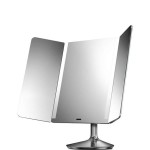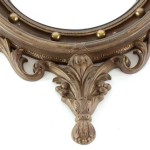How to Mirror iPad to PC via USB
Mirroring an iPad's display to a PC offers several advantages, from presenting content on a larger screen to recording tutorials and gameplay. While wireless mirroring methods exist, a USB connection often provides a more stable and lag-free experience, crucial for activities requiring real-time responsiveness. This article explores various methods for mirroring an iPad to a PC using a USB connection.
Utilizing Third-Party Screen Mirroring Software: Numerous third-party applications facilitate iPad screen mirroring to a PC via USB. These applications typically require installation on both the iPad and the PC. Once installed, they establish a connection via the USB cable and replicate the iPad's display on the computer monitor. Some of these applications offer additional features like screen recording, screenshot capture, and remote control of the iPad from the PC. Selecting a reputable and reliable application is paramount for security and performance.
Specific Software Examples and Their Use: Reflector 3 is a popular choice for wireless mirroring but also supports connections via USB. It offers a user-friendly interface and supports multiple devices. Another option is LonelyScreen, known for its simplicity and ease of use. Users should research various options and choose the software that best suits their specific needs and budget. Many offer free trials, allowing users to test functionalities before committing to a purchase.
Step-by-Step Guide for Using Third-Party Software: The specific steps vary slightly depending on the chosen application, but the general process remains consistent. First, download and install the software on both the iPad and the PC. Ensure the iPad is unlocked and connected to the PC using a USB cable. Launch the application on both devices. The PC application should detect the connected iPad and initiate the mirroring process. The iPad's screen will then be displayed on the PC monitor.
Leveraging QuickTime Player (for macOS): For users with macOS systems, QuickTime Player offers a built-in screen recording functionality that can also mirror an iPad's display. This eliminates the need for third-party software. Connect the iPad to the Mac using a USB cable. Open QuickTime Player and select "New Movie Recording" from the File menu. Click the dropdown arrow next to the record button and select the iPad as the camera and microphone input source. The iPad's screen will then be mirrored within the QuickTime Player window.
Detailed Steps for QuickTime Mirroring: Ensure the iPad is unlocked and connected to the Mac. Open QuickTime Player. In the "File" menu, select "New Movie Recording". Next to the record button, click the down arrow. Under "Camera," choose the connected iPad. The iPad's display will appear in the QuickTime Player window. From here, users can choose to record the mirrored screen or simply view it in real-time.
Troubleshooting Common Issues: Several issues can arise during the mirroring process. If the PC doesn't recognize the connected iPad, ensure the iPad is unlocked and that the latest iTunes (or Finder, for newer macOS versions) is installed on the PC. Trying a different USB cable can also resolve connection problems. If the mirroring software fails to function correctly, restarting both devices often rectifies the issue. Consulting the software's documentation or support resources can provide solutions to more specific problems.
Understanding the Limitations of USB Mirroring: While USB mirroring offers a stable connection, it also has limitations. Unlike wireless mirroring, it requires a physical cable, restricting movement. Some applications may not support all iPad models or iOS versions. Additionally, the quality of the mirrored display might be affected by the processing power of both the iPad and the PC. It’s important to consider these factors when choosing a mirroring method.
Alternative Mirroring Options: Besides USB mirroring, users can explore wireless options such as AirPlay. AirPlay allows mirroring to Apple TV or compatible smart TVs. While convenient, wireless methods can be susceptible to network interference, potentially leading to lag or dropped connections. Choosing between wired and wireless mirroring depends on the specific needs and the environment where mirroring will take place.
Choosing the Right Mirroring Method: Selecting the appropriate mirroring method depends on individual requirements. For presentations or activities requiring a stable, lag-free connection, USB mirroring is the recommended approach. If mobility is a priority, wireless mirroring might be more suitable. Consider factors like the available hardware, software compatibility, and the specific task at hand when making a decision. Experimenting with different methods can help users determine the best solution for their particular use case.
Ensuring Software and Hardware Compatibility: Always check the compatibility of chosen mirroring software with the iPad's iOS version and the PC's operating system. Using outdated software versions can lead to connectivity problems or reduced functionality. Similarly, ensure the USB cable is compatible with both devices. Using a faulty or incompatible cable can prevent a successful connection. Keeping software and hardware updated ensures optimal performance and minimizes potential issues.

5 Effective Ways How To Mirror Your Ipad Screen Pc

How To Mirror Ipad Pc Via Usb New Guide

How To Mirror Ipad Pc Via Usb New Guide

5 Ways To Mirror Ipad Pc With Ease Full Guide

Full Guide Ipad Mirror To Pc With 5 Easy Methods

Best Ways To Screen Mirror Iphone Pc Via Usb Cable

How To Mirror Iphone Pc Via Usb

Everything You Need To Know Mirror Ipad Pc Via Usb

5 Effective Ways How To Mirror Your Ipad Screen Pc

Guide How To Mirror Ipad Pc With Without Usb Cable








